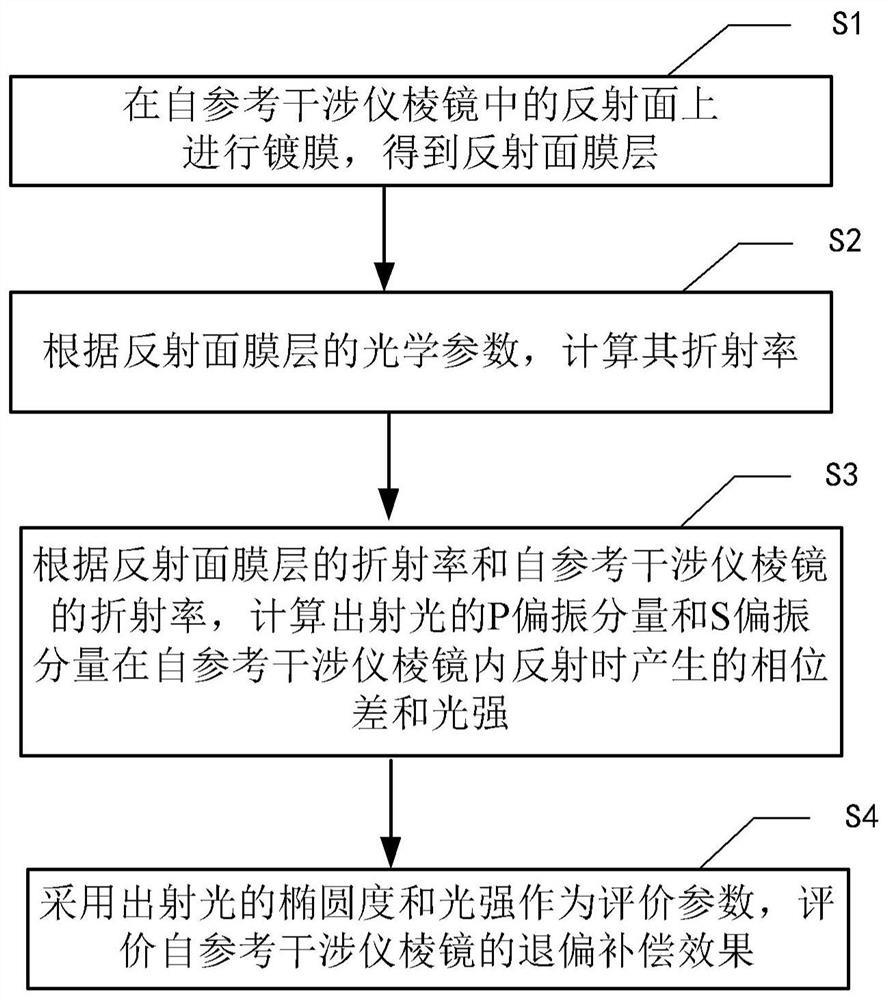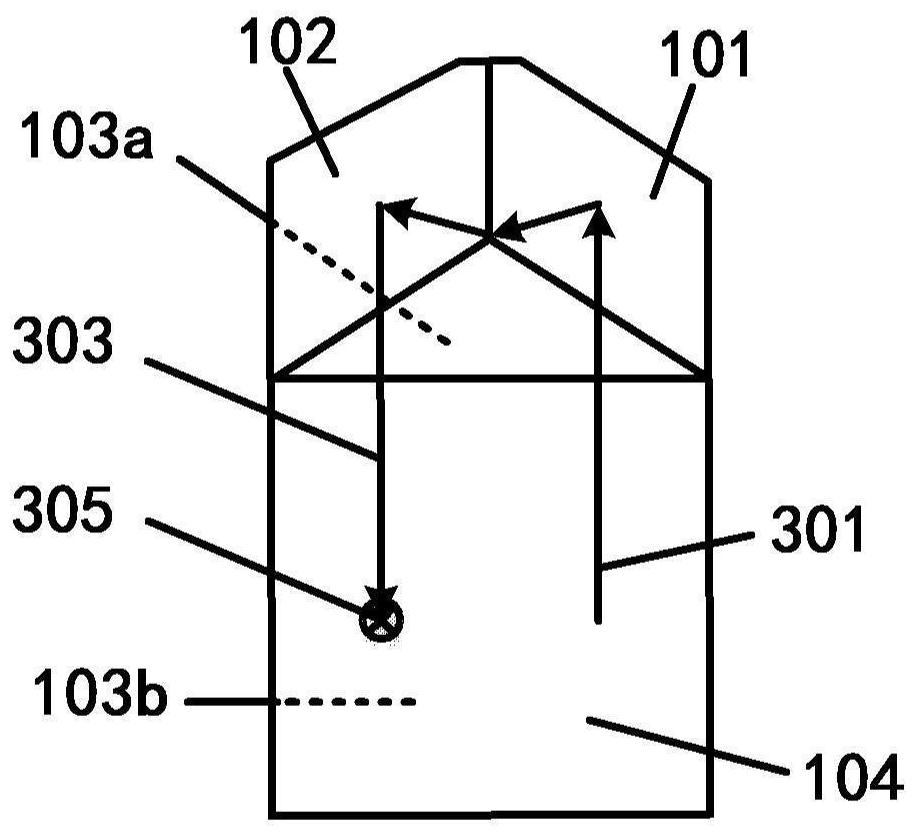Depolarization compensation method for self-referencing interferometer prism
A technology of self-referencing interference and compensation method, which is applied in the field of depolarization compensation of self-referencing interferometer prisms, which can solve the problems of difficult to realize prism rotation or change of incident angle, non-consideration of polarization-maintaining film coating scheme, attenuation of output light intensity, etc. problem, to achieve the effect of increasing the light intensity, reducing the depolarization effect, and increasing the amplitude
- Summary
- Abstract
- Description
- Claims
- Application Information
AI Technical Summary
Problems solved by technology
Method used
Image
Examples
Embodiment 1
[0116] When the reflective film layer is a metal film, both n and κ are non-zero constants.
Embodiment 2
[0118] When the reflective film layer is a dielectric film, n is a non-zero constant and κ is zero.
[0119] Step S3, when the incident light is incident on the interface between the self-referencing interferometer prism and the reflective film layer, it is decomposed into a P polarization component and an S polarization component, and according to the reflection coefficients of the P polarization component and the S polarization component, using the From the Jones matrix of the reference interferometer prism, the polarization tracking of the incident light is carried out, and the phase difference and light intensity generated when the P-polarized component and the S-polarized component of the outgoing light are reflected at the interface are calculated. Specifically include:
[0120] Step S31, when the incident light is incident on the interface between the self-referencing interferometer prism and the reflective film layer, the refraction angle θ t for
[0121]
[0122]...
PUM
 Login to View More
Login to View More Abstract
Description
Claims
Application Information
 Login to View More
Login to View More - R&D
- Intellectual Property
- Life Sciences
- Materials
- Tech Scout
- Unparalleled Data Quality
- Higher Quality Content
- 60% Fewer Hallucinations
Browse by: Latest US Patents, China's latest patents, Technical Efficacy Thesaurus, Application Domain, Technology Topic, Popular Technical Reports.
© 2025 PatSnap. All rights reserved.Legal|Privacy policy|Modern Slavery Act Transparency Statement|Sitemap|About US| Contact US: help@patsnap.com



